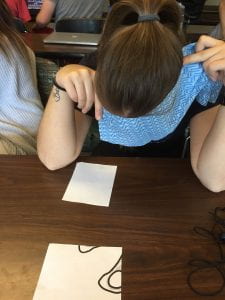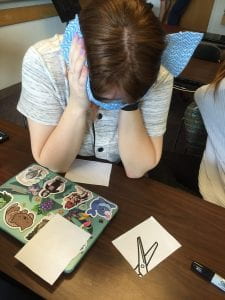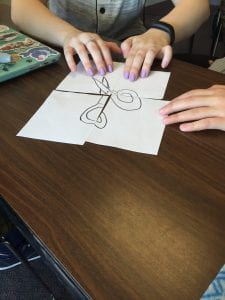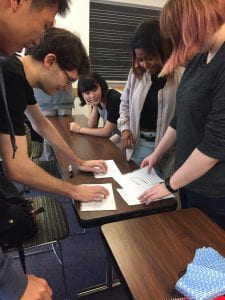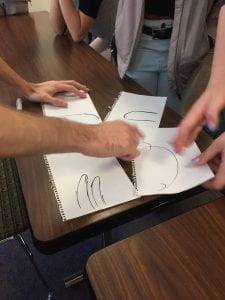rar file: https://www.dropbox.com/sh/an55072uco95nex/AAAGMbK6W192Z5rR8rmKbbQ5a?dl=0
(all art, sounds, and music assets courtesy of the resources provided within RPG Maker XP)
Artist’s Statement:
This class has been an interesting experience for me. I’ve been in a game design class before, but this one made me really push the boundaries on what I thought a game was. It also gave me new perspectives on what I could do with games. Our first project in scores was really what sold me on this.
I loved the healing aspect of Yoko Ono’s work, so I tried to go back to that and work it into my final project. In the game, the player starts off alone with no support. They are easily defeated by the boss – one hit, before they even get the chance to attack. But, the more they play, the more members of their former team rejoin and the stronger they get. I wanted the player to feel more empowered and hopeful as they continued to fight an initially futile battle.
This is also a similar sentiment found in the game I wanted to bring in for the indie game show and tell – Undertale. Unfortunately, I was absent on the actual day, but I wanted to go over the theme of friendship in the game. As the player goes on, they accumulate more friends that help them throughout the course of the game, a few of whom are set on destroying the player when they first meet. But through determination and a will to get through to these characters, the player is able to gain their support. I’m the type of person that relies on the presence of friends and family to make it through tough times, so I found this message incredibly touching knew that I wanted to make games that also had similar uplifting themes.
On that note, this class has also helped me realize the kinds of game that I want to make. I like making games that help make people happier or bring people together to have fun as a group (such as the game that I hosted for the third project). I feel as though a lot of art games like to deal with heavier themes that make you think. And I certainly don’t think that’s a bad thing – in fact, I think they’re important and should be made. But personally, I think I want to continue making games with a more light hearted sort of vibe. I don’t think I’ll steer entirely away from darker or more somber themes, but I’d like to incorporate them into a more uplifting message rather than making them the sole focus (I’m always a sucker for a happy ending, after all).
…and I think that’s about all I have to say in regards to the game. As for the class, I think it’s helped me figure out more about my own personal preferences by exposing me to different types of art. I also got a chance to mess around a bit and try out things in different mediums that I normally wouldn’t have thought to use. I think, in the future, I’ll continue to try and explore all the possibilities that I can.

